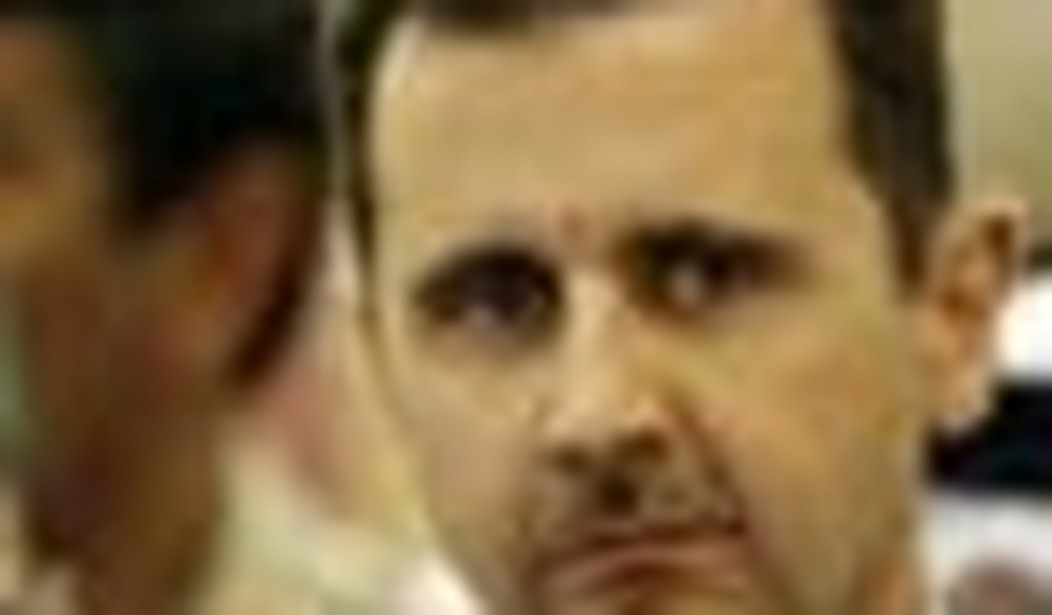On the morning of December 23, two suicide car bombs ripped through Damascus, killing over 40 people and wounding about 160. According to Syria’s official state media organ, SANA, the bombings targeted the State Security Department and another “department of security” — euphemisms for Syrian intelligence.
Unlike other incidents occurring within Syrian borders, such as the Damascus assassination of Hezballah leader Imad Mughniyeh, state TV was immediately on scene with reports. Gruesome pictures of the bodies were broadcast on official websites and television stations.
The Syrian government news agency announced that the explosions were designed “to kill the largest amount of citizens possible” and bore “hallmarks of al-Qaeda.” During the nine-month-long mostly nonviolent uprising, regime newspapers have regularly claimed that the oppositionists were actually radical Islamist terrorists.
During his interview with Barbara Walters, President Bashar al-Assad said:
We are having terrorists in many places. … Not everybody in the street was fighting for freedom. … You have extremists, religious extremists … outlaws … drug smugglers, and you have like-minded people of al-Qaeda.
The regime’s argument: either Assad wins or anarchy and radical Islamism prevails. This is not necessarily a false dichotomy if there is evidence to prove it. So is the regime starting to manufacture such evidence?
It is true that after months of being mowed down by Assad’s forces, the Syrian opposition has started to militarily engage the regime in a more organized fashion. Yet the opposition’s main armed force, the Free Syrian Army, denied any involvement. Besides, it is comprised of people who were in the Syrian army just weeks ago. There is no al-Qaeda connection.
Some Western media sources published a variation that also backed the regime’s version, blaming the Muslim Brotherhood rather than al-Qaeda for the attacks. Yet the alleged communique on the bombing doesn’t sound at all like the Brotherhood, especially since it refers to “Sunni” units. The Muslim Brotherhood denied the claim saying it was “completely fabricated under our name on the Internet. … [The claim was] orchestrated by the regime, just as the attacks were.”
The Free Syrian Army has posted videos of members attacking the Syrian Army or the pro-Assad militia al-Shabiha. Many analysts have already stated that Syria is in a state of civil war which may grow more sectarian, with the Sunni majority battling the ruling Alawites. But there have never been reports of a Muslim Brotherhood armed force.
Opposition figures quickly rejected the regime’s accusations of an opposition/al-Qaeda alliance, and blamed Assad’s forces for the bombing. The timing coincides with the arrival of Arab League observers, scheduled to arrive December 26 to monitor human rights.
By attributing the bombings to “Sunni” — meaning al-Qaeda or Muslim Brotherhood forces — the regime could be trying to rally its minority base, which includes Alawites, Christians, and Druze. Christian groups, with good reason, fear Syria could become another Iraq, a country from which about half the Christian community has fled, with many relocating to Syria.
While Syria’s Sunnis are rightly seen as the insurgency’s backbone, they are hardly monolithic. The Syrian regime has co-opted members of the Sunni bourgeoisie and urban elite whose motives for backing Assad include a desire for stability, commercial benefits, and approval for the current government’s relative secularism.
Yet Syria is not yet in a state of communal warfare, and this might be avoided. Members of almost every group can be found on both sides of the conflict. The government wants to brand its opponents as both exclusively Sunni and radical Islamists. It is unlikely that this strategy will work.









Join the conversation as a VIP Member